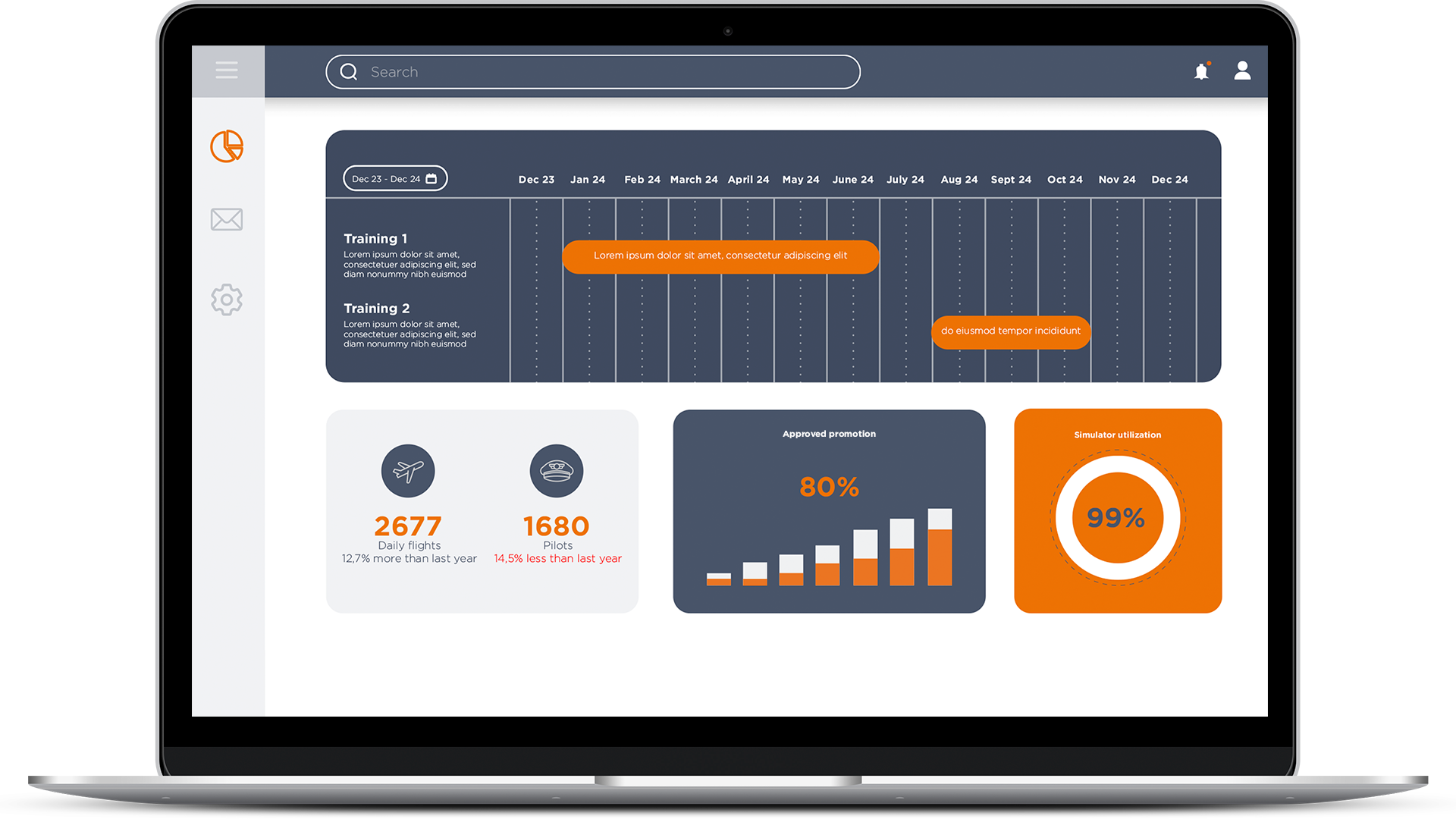Project Description
THE RIGHT PERSON FOR THE RIGHT JOB AT THE RIGHT TIME
LONG-TERM STRATEGIC WORKFORCE PLANNING FOR AN AIRLINE COMPANY

BRIEF
In the fast-paced world of aviation, an airline company needs to meet the dynamic market needs through meticulous planning by having the right personnel, e.g. pilots, appropriately trained and readily available when needed. Such planning requires long-term foresight. It involves considering long-term factors like hiring, training, retirements, sick leaves, and market trends, all while ensuring compliance with labor agreements and regulations.
Planning for the future is a dynamic affair. Given the many factors affecting decision-making, it is not uncommon to want to run various scenarios, from the most pessimistic to the most optimistic. What happens if hiring candidates becomes more challenging? What happens if market demand increases and we need to provide more services? What happens when regulations change? Unfortunately, it is extremely challenging to create a plan by hand that is both valid and optimal. That’s where we come in.
For our client, one of the Dutch airlines, our team of Data Scientists and Optimization experts developed a robust optimization model that was capable of:
Generating optimal career plans for thousands of pilots given scenarios provided by the planning and assignment department.
- Measuring the actual costs and opportunities of these plans to gain real insights into the impact of the model’s decisions.
THE CONCEPT
The purpose of the optimization model is to avoid staff shortages by creating a plan of when to hire how many new pilots and when to train existing employees for new roles. These plans must comply with internal rules and regulations and optimize costs by minimizing missed opportunities caused by staff shortages. As many factors are involved in these decisions, the solution had to allow users to create scenarios and provide them with a way to analyze and compare results.
CUSTOMER CHALLENGE
With thousands of pilots, there are countless decisions to be made. Although it’s easy to come up with plans, only a small percentage of them meet the required rules and regulations. Even for a powerful computer, going through all these plans simply isn’t an option. The rules and regulations must be an internal part of the optimization model. This way, it can navigate through the vast number of possibilities and not just find a valid but an optimal one. The client has to trust and follow the model’s advice. This required a great deal of work to make the model understandable, interpretable and transparent.
MEDIAAN IN ACTION
Throughout this project, we (Mediaan Conclusion & Future Facts Conclusion) maintained a close collaboration with our client, with our team of experts taking the lead. The following techniques and technologies were used:
Python
Mixed-integer linear programming
Time-Series Forecasting
Stochastic Optimization
Gurobi
PostgreSQL
FastAPI
Kubernetes

RESULTS
At the beginning of this project, our team had a steep learning curve to understand all internal rules and regulations and turn them into formal mathematics. This did not stop them from creating the first running version of the model within the first few months. Collaborating closely with the client, they ensured the acceptance of the model and continued to add more features to provide more control to the end-users. As time went by, the model began to be used more and more by the client to make decisions. They viewed it as a huge productivity boost that allowed them make decisions with more confidence as it was entirely data-driven and transparent. Based on internal calculations, our solution yielded huge cost savings not only by being able to produce high-quality long-term plans, but also by streamlining a process that had previously been lengthy and costly.
WANT TO SEE MORE?
OTHER PROJECTS
CONTACT
GET IN TOUCH!
Would you like to learn more about our solution? Just provide your contact information, and one of our experts will get in touch with you.
We hope we have now convinced you that we are the ideal partner to brainstorm with about your specific needs. Don’t hesitate to contact us!


